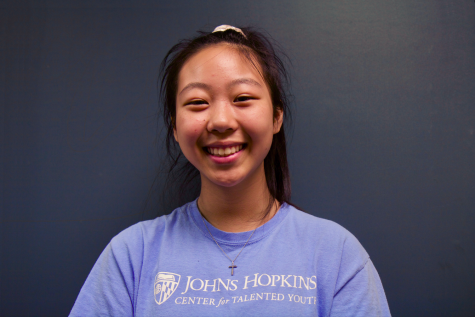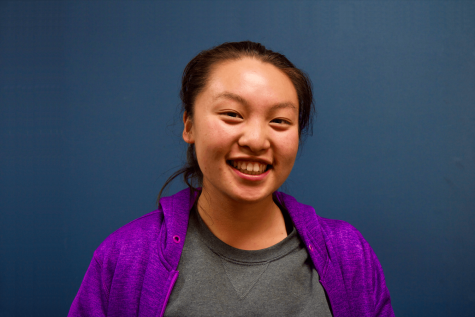Lynbrook celebrates Regeneron STS Scholars
January 25, 2018
For the past three decades, the Regeneron Science Talent Search competition has been recognized as the epitome of pre-collegiate scientific achievement. On Jan. 9, seniors Jasper Huang, Rohan Mehrotra, Advait Patil, Vinay Senthil, Melissa Wei and Bill Zhu were announced as part of the Top 300 semi-finalist scholars; on Jan. 23, Patil and Mehrotra advanced as Top 40 finalists.
The selection process for entry is highly tedious and competitive, requiring applicants’ research paper grades, letters of recommendation, essays, test scores, extracurriculars, high school transcripts and more. This narrows the contestant pool down to a small but highly gifted group of scholars.
Wei worked on an online application to find electron transfer pathways in proteins.
“It is important to discover these [paths] because currently it is pretty hard to find electron transfer pathways,” said Wei. “This is the first automated application platform to find electron transfer pathways.”
Encouraged by the friendly academic environment at Lynbrook, Mehrotra began emailing professors at various colleges and soon started working with a chemistry professor at Stanford University in the Stanford labs.
“Whenever you take a drug, you’re either taking an oral pill or getting an injection, but the issue is that it causes the drug to be distributed all around your body and not just where it is needed,” said Mehrotra. “What I developed is a nanofilm that can be implanted at the location of the disease in your body, and when electric stimulation is applied to that film, it releases the drug directly at the site of infection.”
Patil first expressed interest in science when he began conducting research in seventh grade, spurred on by his participation in elementary school science fairs. He completed his Regeneron project, a computational framework that analyzed the stem of interactions and created networks for how different types of cells in different populations interact, at the Massachusetts Institute of Technology.
“When you do research, you normally experiment on one type of organism, and you can’t really understand how it actually applies to the natural world,” said Patil, “So I created a computational framework that analyzes the stem of interactions and created networks for how different types of cells in different populations interact.”
Zhu spent his nights stargazing as a child, endlessly fascinated by the cosmos. He visited observatories regularly and kept up to date with new discoveries and breakthroughs.
For his project, Zhu utilized a stacking procedure to systematically bring out the signal of the galaxies to study their overarching properties.
“Despite all the signal-boosting techniques, there was very little residue left over, meaning the host galaxies are likely very close to their neighboring quasars,” said Zhu. “I ran simulations to constrain the impact parameter (distance between quasar and galaxy) to be around 4 – 7 kiloparseconds.”
As of now, he is working to get his research published.
Huang’s project focused on analyzing the sounds of peoples’ footsteps using several machine learning techniques. He was inspired by the realization that he could recognize his family member’s distinct footsteps around the house.
When Huang found out that he qualified for the competition’s Top 300 scholars, he was ecstatic.
“I felt the same sense of accomplishment, satisfaction, and exhilaration when one gets a new high score in Crossy Road, Flappy Bird or the like,” said Huang.
Senthil was inspired to design his project when he saw doctors at the Bay Area Robotics Symposium struggling to view the internal passages of lungs.
“Currently, doctors examine the lungs using a fluoroscopy machine that emits radiation, affecting both the doctor and patient and yet only produces a 2D-image,” Senthil said, “Using yoga mats to represent the insides of the lungs and a webcam, I built an algorithm that constructs a 3D model of the bronchioles from the video feed of the bronchoscope without radiation and at a fraction of the cost.”
For Senthil, landing a spot as a semi-finalist was particularly special because, unlike his peers who had the help of professional lab equipment, he worked on his submission solely at home.
These scholars have all represented Lynbrook exceptionally; their achievements only serve to reflect their hard work and ambition.



































































